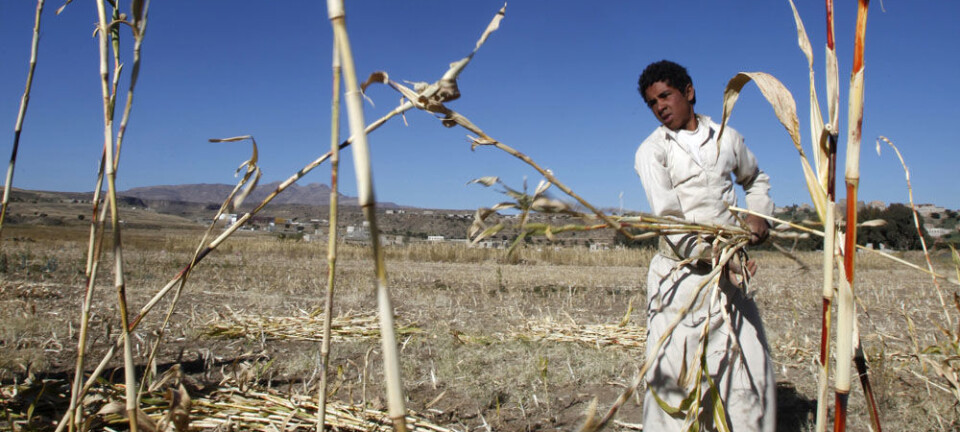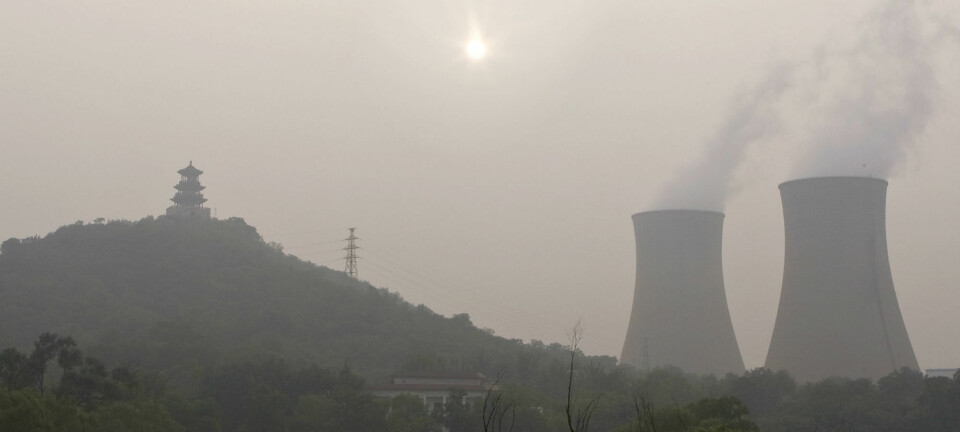An article from Norwegian SciTech News at NTNU
Urgent need to phase out coal power
Coal power is one of the main causes why greenhouse gas emissions have risen at an unprecedented rate over the last 10 years. We can cut emissions using wind power, solar heat and power, highly efficient building shells and electric vehicles.
Denne artikkelen er over ti år gammel og kan inneholde utdatert informasjon.
Ever-rising greenhouse gas emissions and the potential need to deploy untested and expensive climate engineering technologies are just two of the many bits of bad news in the Intergovernmental Panel on Climate Change’s newest report Mitigation of Climate Change.
“But there’s good news hidden in the bad. If we take action to cool the planet, we can also expect the added benefit of cleaner air, particularly in China,” says Professor Edgar Hertwich, from the Norwegian University of Science and Technology (NTNU). One of the lead authors of the Energy Systems chapter.
“One of the main causes of greenhouse gas emissions is coal power,” Hertwich says.
“Coal-fired power plants produce a lot of pollution, so any measures that will reduce our combustion of coal will also help us to fight air pollution.”
This will be particularly important for China, which has been plagued by skyrocketing air pollution from coal power plants used to fuel its industrial expansion.
Experts estimate that a quarter of a million people die prematurely each year in China because of air pollution from the country’s coal-fired power plants.
Negative-emissions technologies
The world is now at the very upper end of the emissions scenarios presented in previous IPCC reports, which gives new urgency to the need to act.
“There is a clear concern about what we call the carbon budget,” Hertwich says.
The world’s scientists have calculated a carbon budget for the planet, which tells us how much CO2 we can put into the atmosphere before we reach concentrations above which we will unacceptably warm the planet. If we continue to emit greenhouse gases at current rates, we risk “overshooting” the carbon budget, with dire consequences.
“We understand now if we do not want to overshoot, we need to bring emissions down to basically zero over the next 50-60 years,” he says.
If humankind does not control the growth in greenhouse gas emissions in the next decade, it increases the likelihood that we will need negative-emissions technologies, such as CO2 removal from the atmosphere.
“These are unproven and expensive technologies that will shoulder future generations with substantial costs,” he says.
Must phase out coal
But there’s good news, too, at least when it comes to energy sources.
The world is making significant investments in renewable energy, which in turn is making renewables cheaper and easier to bring to market.
“What I found was really surprising was the rate at which renewable power has come on line,” Hertwich says.
He noted that the last IPCC report was published in 2007, when solar power was more of a novelty source of energy for individuals who were too far from power lines to get conventional electricity from the grid.
“Today we build large power plants that can supply entire cities with renewable electricity. In fact, today we install the equivalent of 100 large coal-fired power plants – the same capacity in renewables – every year,” Hertwich says.
“However, we haven’t started phasing out the coal-fired power plants, so this needs to happen too.”
Hertwich does not believe that reports like this by themselves can make a difference.
“The report is not the direct cause of change, but it can contribute to helping people make the right choices when they are actually willing to change something.”
Key findings
NTNU professors Edgar Hertwich and Daniel Beat Müller, two of the lead authors of report, have summarized what they considered to be the most important findings:
- Greenhouse gas concentrations have risen at an unprecedented rate over the last 10 years, mainly because of the construction of coal-fired power plants in emerging economies, such as China.
- The steep increase in greenhouse gas emissions puts the world at the upper end – the worst case – for previous emissions scenarios published by the IPCC.
- Alternative technologies are available, and becoming more and more affordable. We can cut carbon emissions using wind power, solar heat and power, highly efficient building shells, and electric vehicles.
- Some – but not enough – climate policies have been implemented on national, regional and local levels. They will not halt the global rise in emissions, but have given policymakers experience with programmes such as emissions trading, carbon taxes, technology standards, and market penetration programmes.
- The next decade can’t be like the last decade. In fact, we have to stop CO2 emissions from fossil fuel combustion and industrial processes by the end of this century if we want to limit global average temperature increases to 2 or even 3 °C.
- If we keep increasing our CO2 emissions over the next decade we will overshoot the 2 °C target.
- Overshooting is risky and will be expensive. If we overshoot, the world would have to deploy expensive, unproven technologies as early as 2070 to remove CO2 from the atmosphere.
- A cool planet can mean cleaner air. Replacing fossil fuels with energy efficiency and a range of renewable and nuclear energy technologies, if properly chosen, may lead to a substantial reduction of pollution and associated health and ecological impacts.
-
The world has gotten more efficient over the past decades, but not enough to cut emissions to the levels that are needed. We need to change the way we design cities to cut transportation and construction emissions and to allow for urban mining of recyclable materials, among other approaches.



































